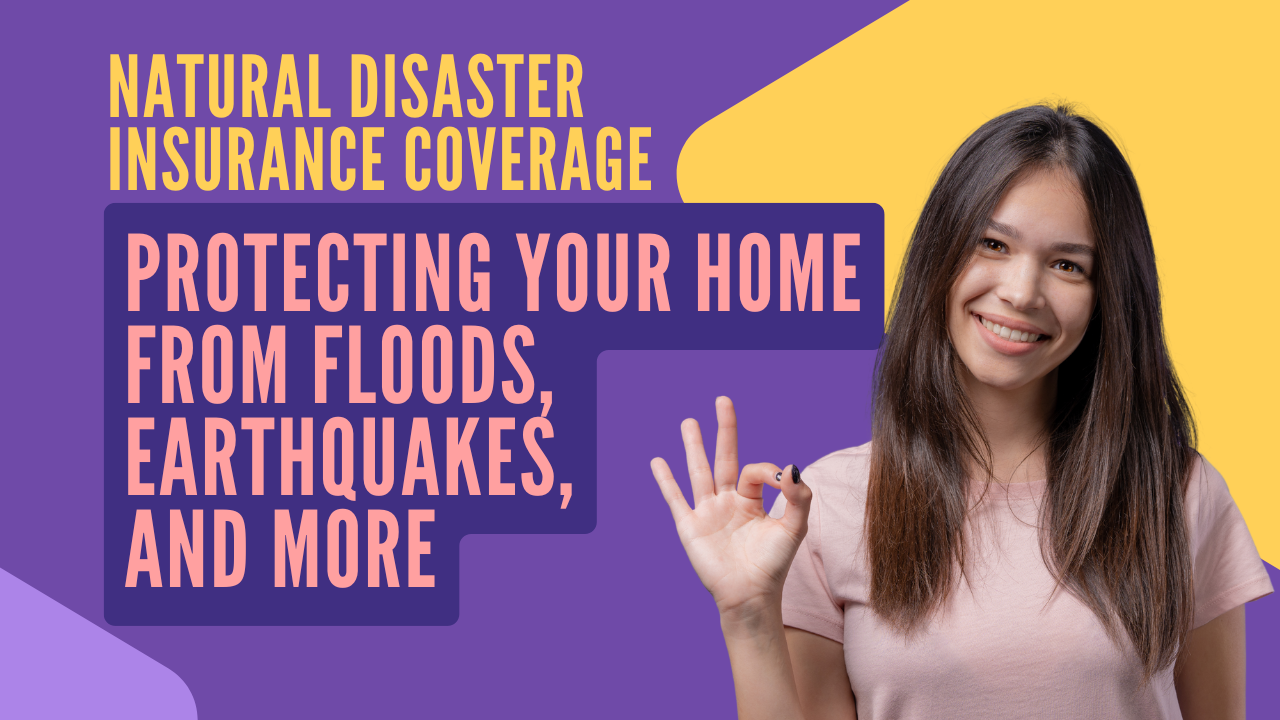When disaster strikes, it rarely gives advance notice. From raging wildfires to rising floodwaters and sudden earthquakes, natural disasters can wreak havoc in seconds—leaving behind financial ruin and emotional stress. With climate change driving an increase in both the frequency and severity of extreme weather events, understanding your insurance options is more important than ever.
In this in-depth guide, we’ll break down how natural disaster insurance coverage works, what’s typically excluded from standard policies, and how you can make sure your home, belongings, and finances are properly protected.
What Is Natural Disaster Insurance Coverage?
Natural disaster insurance coverage refers to specialized policies or policy add-ons designed to protect your property and belongings from damage caused by environmental catastrophes. Standard homeowners or renters insurance often does not cover many types of natural disasters like floods or earthquakes, making supplemental coverage essential in many areas.
Types of Natural Disasters and Their Insurance Coverage
1. Floods
Floods are the most common and expensive natural disaster in the U.S.—but ironically, not covered by most standard homeowners or renters insurance policies.
How to Get Covered:
-
Purchase a separate flood insurance policy from the National Flood Insurance Program (NFIP) or a private insurer.
-
Coverage includes both structural damage and personal belongings.
-
Two policies may be needed: one for the building and one for contents.
-
Be aware of the 30-day waiting period before coverage begins.
2. Earthquakes
Most homeowners policies exclude earthquake coverage. If you live in a seismically active area like California or Alaska, a standalone earthquake insurance policy is critical.
What’s Covered:
-
Repairs to your home’s structure
-
Replacement of damaged personal property
-
Additional living expenses if you’re displaced
Considerations:
-
Earthquake insurance often has high deductibles (10%–20% of the insured value)
-
Premiums vary by location and building type
3. Hurricanes and Windstorms
Standard homeowners insurance may cover wind damage from hurricanes, but not flood damage caused by storm surges. In high-risk areas, insurers often require a separate hurricane or windstorm deductible.
Tip:
If you live in a coastal region, review your policy for windstorm exclusions and consider adding a windstorm rider.
4. Wildfires
Wildfires are generally covered by standard policies, but in high-risk regions, insurers may limit coverage or charge steep premiums.
Key Factors:
-
Smoke damage, fire suppression, and home rebuilding may be covered
-
Confirm whether your policy provides replacement cost or actual cash value
-
Look for loss-of-use coverage for temporary housing needs
5. Tornadoes
Tornadoes are usually covered under the windstorm clause of homeowners insurance. However, similar to hurricanes, tornado-prone regions may carry higher deductibles.
6. Volcanic Eruptions
Though rare, standard insurance often covers ash, fire, and blast damage, but may exclude lava flow or earthquakes tied to eruptions.
What About Business Insurance?
Businesses face even greater risks from natural disasters due to income interruption and physical damage. These key policies help:
-
Commercial Property Insurance – Covers damage to buildings, equipment, and inventory.
-
Business Interruption Insurance – Covers lost income during forced closures.
-
Flood & Earthquake Riders – Must often be added separately.
Renters and Natural Disasters
Renters insurance typically covers personal property, but not the building itself. Like homeowners, renters in high-risk areas should consider:
-
Flood insurance for renters (available through NFIP)
-
Earthquake insurance
-
Loss-of-use coverage for temporary relocation costs
How to Evaluate and Improve Your Coverage
1. Know Your Risk
Use tools like:
These maps help determine if your home is in a high-risk area.
2. Review Your Policy Carefully
Don’t assume you’re fully covered. Look for exclusions, limits, and deductibles related to natural disasters.
3. Supplement Your Coverage
Ask your insurer about:
-
Flood insurance
-
Earthquake coverage
-
Sewer backup and debris removal
-
Ordinance or law coverage (required upgrades)
4. Document Your Belongings
Create a home inventory using photos, receipts, and serial numbers. Store this information digitally to simplify the claims process.
What Does Natural Disaster Insurance Cost?
Insurance premiums vary based on location, risk level, and home value. Here’s a rough breakdown:
| Type of Coverage | Average Annual Cost |
|---|---|
| Flood Insurance | $700–$1,400 (can be higher in high-risk zones) |
| Earthquake Insurance | $800–$5,000 (depending on risk and deductible) |
| Windstorm/Hurricane Riders | Varies; often with high deductibles |
Government Aid vs. Insurance
One of the most dangerous misconceptions is relying on government aid.
Reality check: Federal disaster assistance typically comes as low-interest loans, not grants—and it must be repaid.
Insurance offers:
-
Faster payouts
-
Broader protection
-
Greater peace of mind
Common Myths About Natural Disaster Insurance
“My homeowners insurance covers all disasters.”
Most exclude floods and earthquakes entirely.
“I’ll rely on FEMA aid if disaster strikes.”
Aid is limited and not guaranteed.
“I don’t live in a high-risk area, so I don’t need extra coverage.”
Over 25% of flood claims occur outside high-risk zones.
Final Thoughts: Is Natural Disaster Insurance Worth It?
If you live in an area even remotely prone to floods, earthquakes, hurricanes, or wildfires, natural disaster insurance coverage is not just smart—it’s essential. As climate-related events become more frequent, preparing ahead of time can mean the difference between recovery and financial devastation.
Don’t wait until disaster strikes. Assess your risk, review your policies, and consider adding supplemental coverage now. Peace of mind—and your future—may depend on it.
